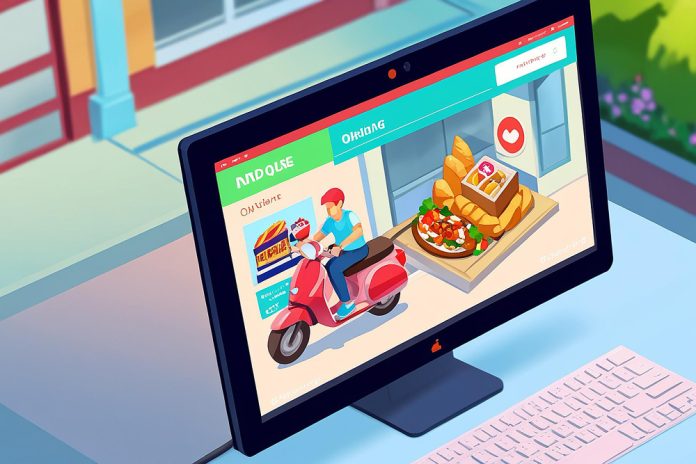India’s love for food has found a powerful new channel—online food delivery. Over the past decade, and especially during and after the COVID-19 pandemic, platforms like Zomato, Swiggy, Uber Eats (merged), and DotPe have transformed the way Indians dine.
What started as a convenience is now a core revenue stream for restaurants across the country. With rising smartphone penetration, digital payments, and a culture that embraces convenience, food delivery is no longer just an option—it’s essential. But with this rise comes a complex web of opportunities, challenges, and strategic shifts for restaurant businesses.
1. The Boom of Food Delivery in India
The Indian online food delivery market is projected to surpass USD 13 billion by 2029, growing at a CAGR of over 15%. Key growth drivers include:
- Urban lifestyle changes: Busy work schedules and traffic make home delivery more appealing.
- Tech penetration: Cheap mobile data and smartphones have put food delivery in the palm of every hand.
- Millennial and Gen Z preferences: Younger generations prefer convenience, variety, and digital-first engagement.
- Pandemic aftershocks: COVID-19 normalized home dining, making food delivery a staple across income segments.
2. Changing Restaurant Revenue Models
Earlier, dine-in sales dominated restaurant revenue. Now, delivery contributes 25–40% of total revenue for many mid-sized urban restaurants.
Let’s explore how food delivery has reshaped revenue generation:
a. Dual-Channel Strategy
Restaurants now operate both dine-in and delivery as separate yet integrated channels. Many have:
- Dedicated kitchens for delivery orders
- Smaller menus optimized for packaging and delivery times
- Exclusive offers for app users to boost delivery volume
b. Cloud Kitchens
These delivery-only setups have exploded in popularity due to their low overheads and scalability. Without the need for prime real estate or front-of-house staff, operators can run multiple brands from a single kitchen.
For instance, one entrepreneur in Bengaluru may operate a North Indian brand, a healthy food brand, and a dessert brand—all from one shared kitchen.
3. The Relationship Between Restaurants and Delivery Platforms
While delivery platforms offer reach, convenience, and marketing tools, restaurants often express concerns about:
a. High Commission Fees
Platforms charge 15–35% commission per order, which can severely impact profit margins—especially for small or family-run businesses.
b. Customer Ownership
Restaurants often don’t get access to direct customer data, making loyalty building difficult. The platform controls the customer relationship, not the restaurant.
c. Promotions and Discounts
Restaurants feel pressure to participate in platform-led promotions, sometimes selling at a loss to remain competitive on app listings.
To address this, NRAI has launched the “Order Direct” initiative encouraging restaurants to build their own delivery channels using white-labeled technology or tools like DotPe.
4. NRAI’s Advocacy and Response
The National Restaurant Association of India (NRAI) has been vocal about fair practices in the aggregator space. Their interventions include:
- Negotiating fairer commission rates
- Campaigning for transparent data-sharing
- Empowering restaurants to build direct ordering systems
- Educating members through workshops and webinars on tech adoption, logistics partnerships, and menu engineering
This push helps restaurants reduce dependence on third-party apps while still offering digital ordering experiences.
5. Impact on Consumer Expectations and Dining Culture
Food delivery platforms have redefined what Indian consumers expect from restaurants:
a. Faster Turnaround
Consumers now expect food at their doorstep in under 30 minutes—even during peak hours—leading to operational stress and higher logistics costs.
b. Consistency Across Locations
If a brand is listed across cities, customers expect uniform taste, packaging, and service quality, which requires strict SOPs.
c. Real-Time Ratings and Reviews
Every order can be rated and reviewed instantly. Restaurants must monitor quality consistently to avoid negative feedback affecting app ranking.
This transparency benefits top performers but can penalize even one-off mistakes.
6. Technology and Analytics Driving Decisions
Delivery platforms provide access to valuable insights that help restaurants:
- Identify top-selling items and high-margin dishes
- Track delivery times, delays, and customer satisfaction scores
- Run targeted offers and loyalty campaigns based on order history
Using this data, restaurants can:
- Adjust their menu pricing
- Optimize staffing during peak hours
- Design combo offers to boost average order value
7. Future Trends in Delivery-Driven Dining
Several exciting trends are shaping the next phase of India’s food delivery scene:
- Hyperlocal Kitchens: Smaller outlets located in neighborhoods for faster delivery.
- Sustainable Packaging: As awareness grows, brands are shifting to compostable or recyclable packaging.
- Voice and WhatsApp Ordering: AI-based ordering through voice assistants or chatbots is growing.
- Subscription Meals: Services offering weekly meal plans for health-conscious urbanites are gaining traction.
FAQs
Q1: What is the biggest advantage of using food delivery platforms for restaurants?
They offer instant visibility and access to a large customer base without the need for significant marketing or tech investment.
Q2: Why are some restaurants moving away from platforms like Zomato and Swiggy?
High commission fees, lack of access to customer data, and pricing control issues have driven some to develop their own delivery solutions.
Q3: How are cloud kitchens different from regular restaurants?
Cloud kitchens are delivery-only kitchens with no dine-in setup. They save on rent, service staff, and decor, focusing solely on fast delivery.
Q4: What is NRAI’s position on food delivery platforms?
NRAI advocates for fair terms for restaurants, encourages direct ordering solutions, and offers resources to balance aggregator relationships.
Q5: How can a small restaurant compete on food delivery platforms?
By optimizing menus, ensuring consistent quality, participating in well-planned promotions, and offering excellent packaging and timely service.
Q6: Will food delivery replace traditional dining out?
No—but it will continue to grow as a parallel experience. Dining out offers ambiance and social interaction, while delivery offers speed and convenience.
Conclusion
Food delivery platforms have become essential to India’s restaurant industry, reshaping operations, marketing, and consumer behavior. While they offer growth opportunities, restaurants must also navigate challenges around cost, branding, and customer loyalty.
With NRAI supporting balanced innovation and smart ownership models, the future will likely see a hybrid model—where delivery thrives alongside meaningful, dine-in experiences.











